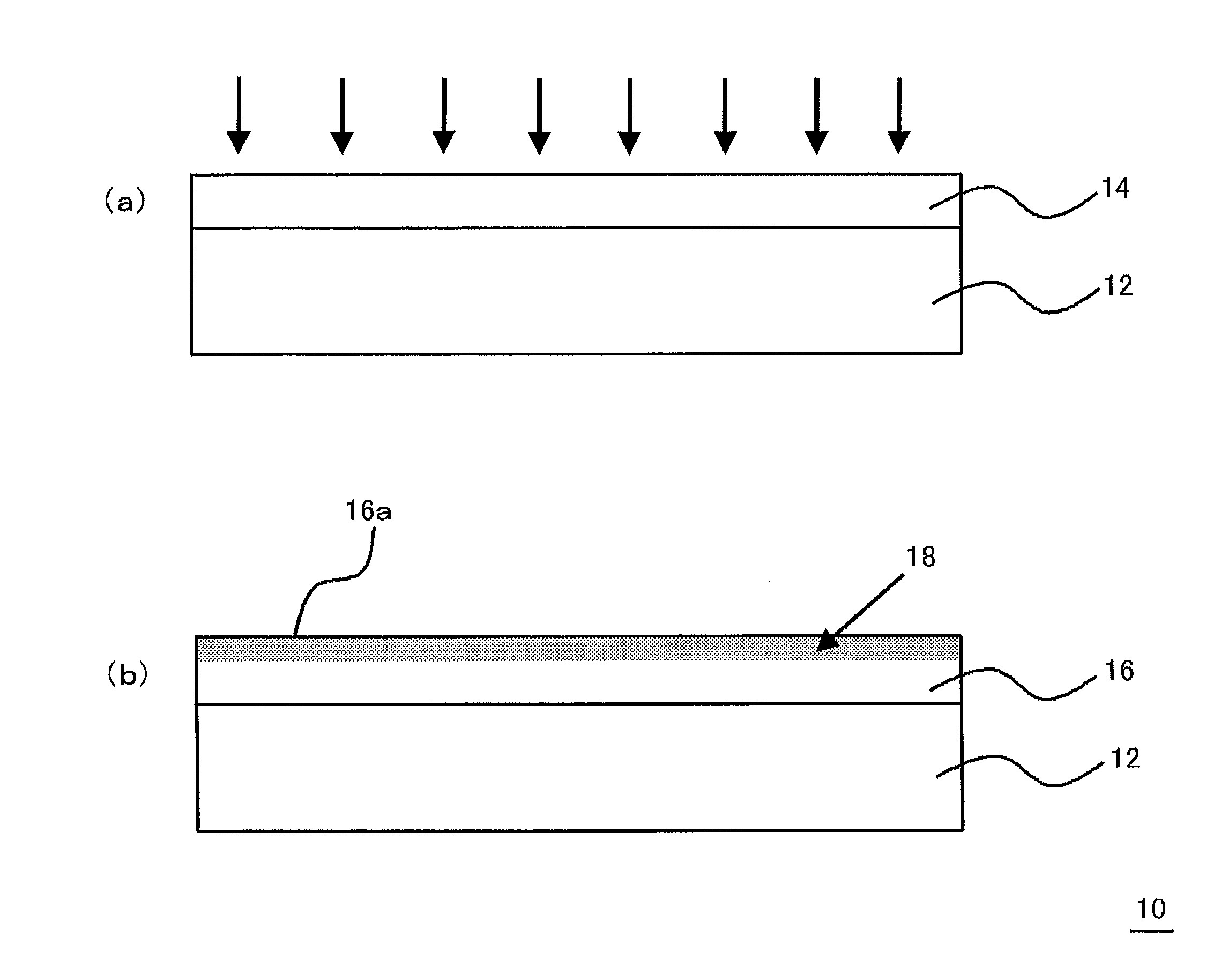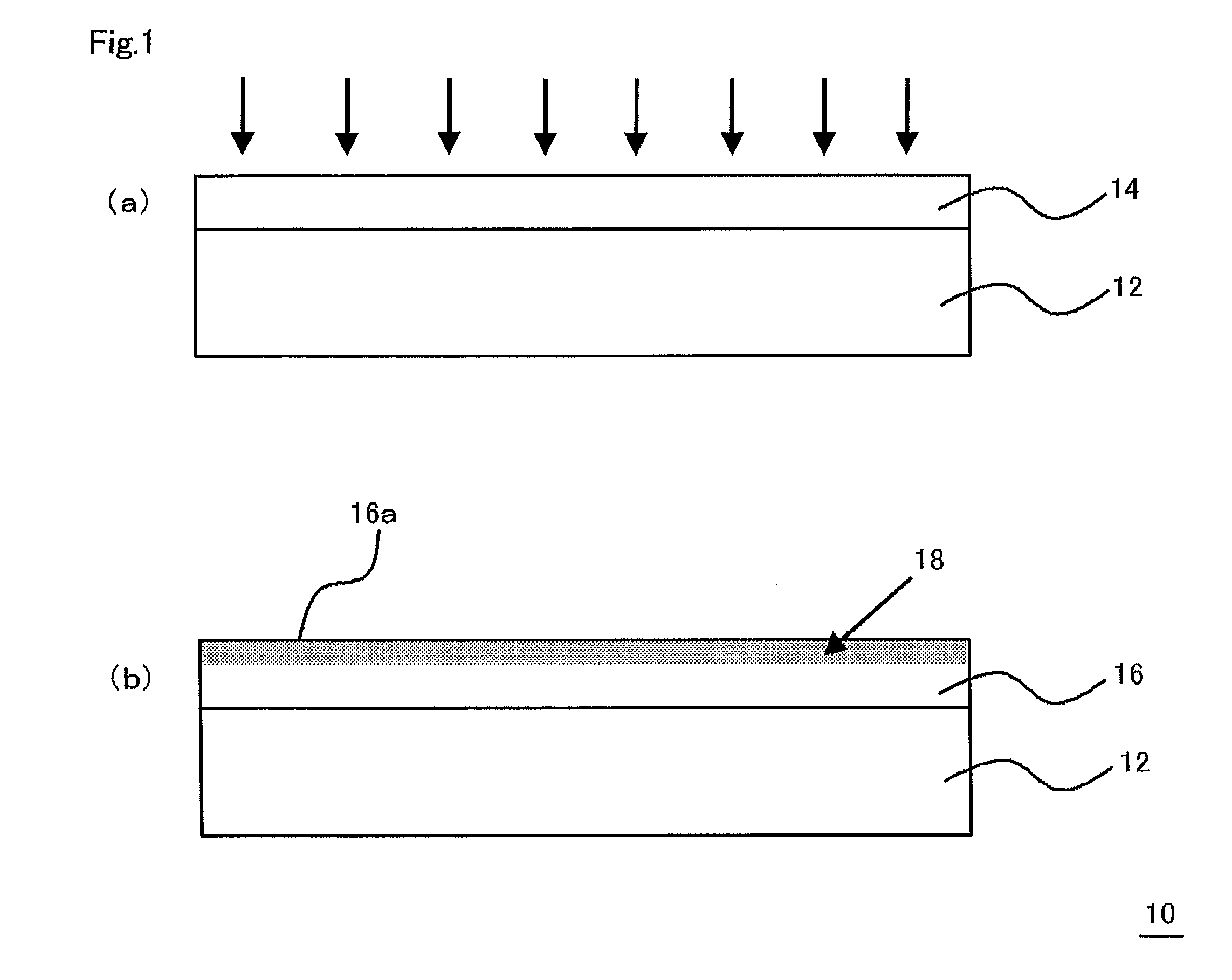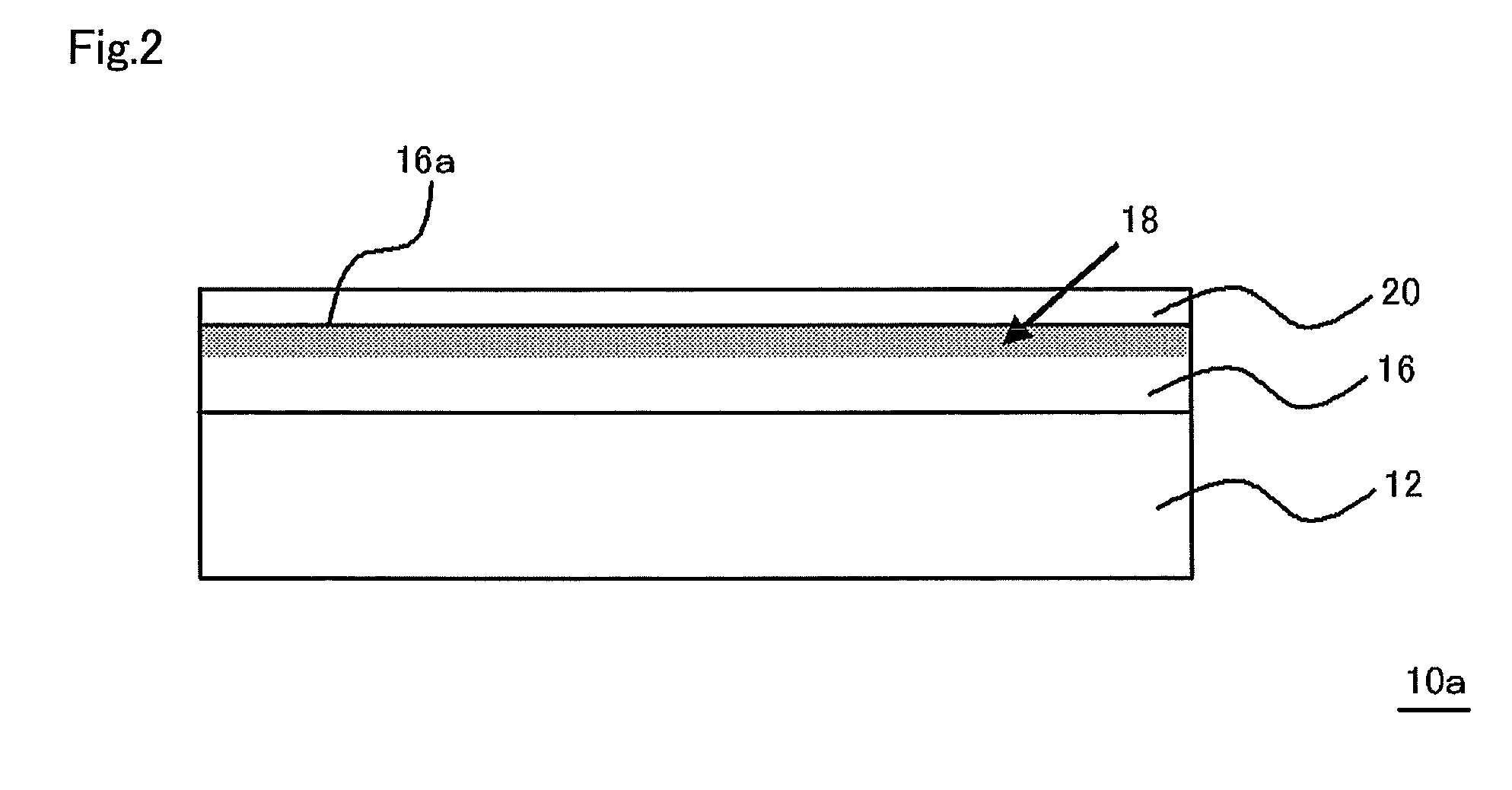Multilayered material and method of producing the same
a technology of multi-layered materials and layered materials, applied in the field of multi-layered materials, can solve the problems of poor abrasion resistance of inorganic polymer layers, inability to prevent deterioration of substrates, and inability to achieve good abrasion resistance, so as to reduce the influence of optical precision, improve the efficiency of optical components, and improve the effect of refractive index controllability
- Summary
- Abstract
- Description
- Claims
- Application Information
AI Technical Summary
Benefits of technology
Problems solved by technology
Method used
Image
Examples
example 1
[0173]A silicon substrate (with a thickness of 530 μm, made by Shin-Etsu Chemical Co., Ltd.) was spin-coated (at 3000 rpm for 10 s) with a 2 wt % xylene (dehydrated) solution of polysilazane (NL110A made by AZ Electronic Materials S.A.), and then the resultant was dried at 120° C. for 10 minutes under the nitrogen atmosphere, whereby a polysilazane film with a thickness of 0.025 μm was produced. The drying was performed under an atmosphere in which the water vapor concentration is about 500 ppm.
[0174]A vacuum plasma process was performed on the polysilazane film under the following conditions.[0175]Vacuum plasma processing apparatus: made by U-TEC Corporation[0176]Gas: Ar[0177]Gas flow rate: 50 mL / min[0178]Pressure: 19 Pa[0179]Temperature: room temperature[0180]Power applied per unit area of electrode: 1.3 W / cm2 [0181]Frequency: 13.56 MHz[0182]Process time: 5 min
example 2
[0183]A silicon substrate (with a thickness of 530 μm, made by Shin-Etsu Chemical Co., Ltd.) was spin-coated (at 3000 rpm for 10 s) with a 2 wt % xylene (dehydrated) solution of polysilazane (NL110A made by AZ Electronic Materials S.A.) to which a catalyst was not added, and then the resultant was dried under the same conditions as Example 1, whereby a polysilazane film with a thickness of 0.025 μm was produced.
[0184]Subsequently, a vacuum plasma process was performed under the same conditions as Example 1.
example 3
[0185]A polyethylene terephthalate (PET) film (with a thickness of 50 μm, “A4100” made by Toyobo Co., Ltd.) was bar-coated with a 2 wt % xylene (dehydrated) solution of polysilazane (NL110A made by AZ Electronic Materials S.A.), and then the resultant was dried under the same conditions as Example 1, whereby a polysilazane film with a thickness of 0.1 μm was produced.
[0186]Subsequently, a vacuum plasma process was performed under the same conditions as Example 1.
PUM
| Property | Measurement | Unit |
|---|---|---|
| Thickness | aaaaa | aaaaa |
| Thickness | aaaaa | aaaaa |
| Thickness | aaaaa | aaaaa |
Abstract
Description
Claims
Application Information
 Login to View More
Login to View More - R&D
- Intellectual Property
- Life Sciences
- Materials
- Tech Scout
- Unparalleled Data Quality
- Higher Quality Content
- 60% Fewer Hallucinations
Browse by: Latest US Patents, China's latest patents, Technical Efficacy Thesaurus, Application Domain, Technology Topic, Popular Technical Reports.
© 2025 PatSnap. All rights reserved.Legal|Privacy policy|Modern Slavery Act Transparency Statement|Sitemap|About US| Contact US: help@patsnap.com



